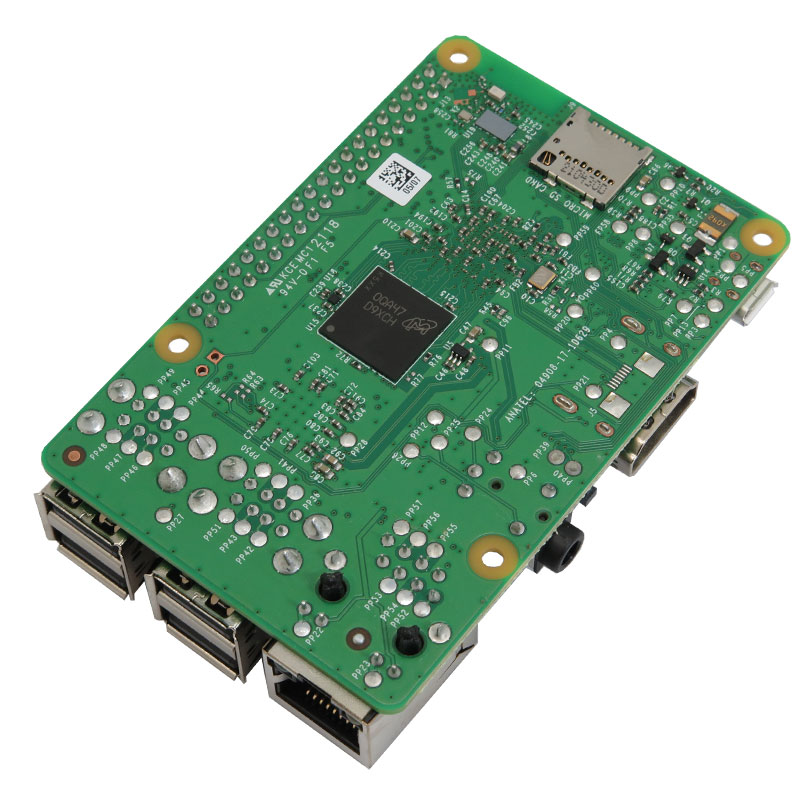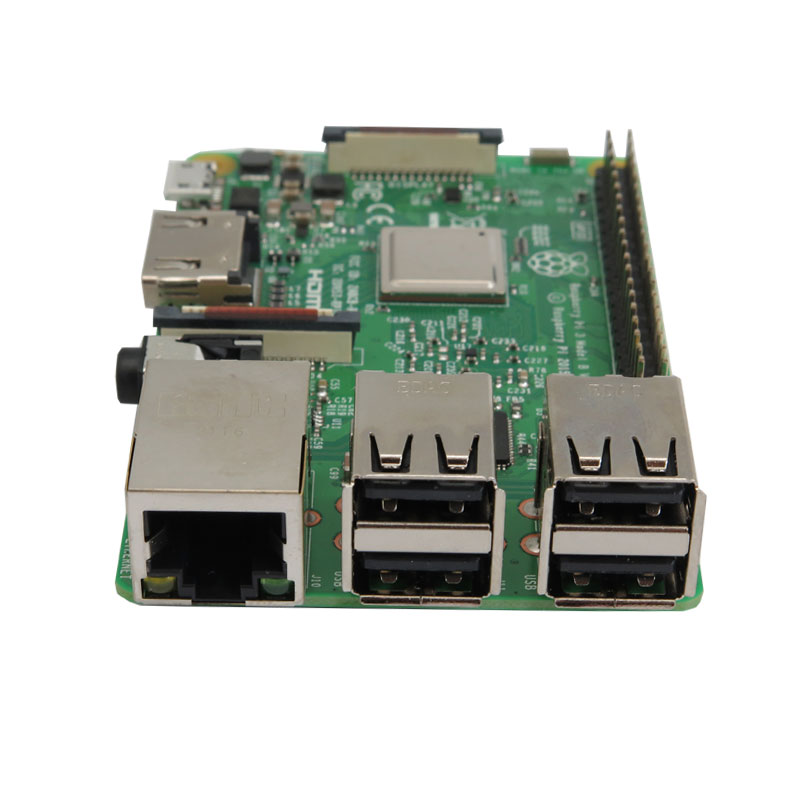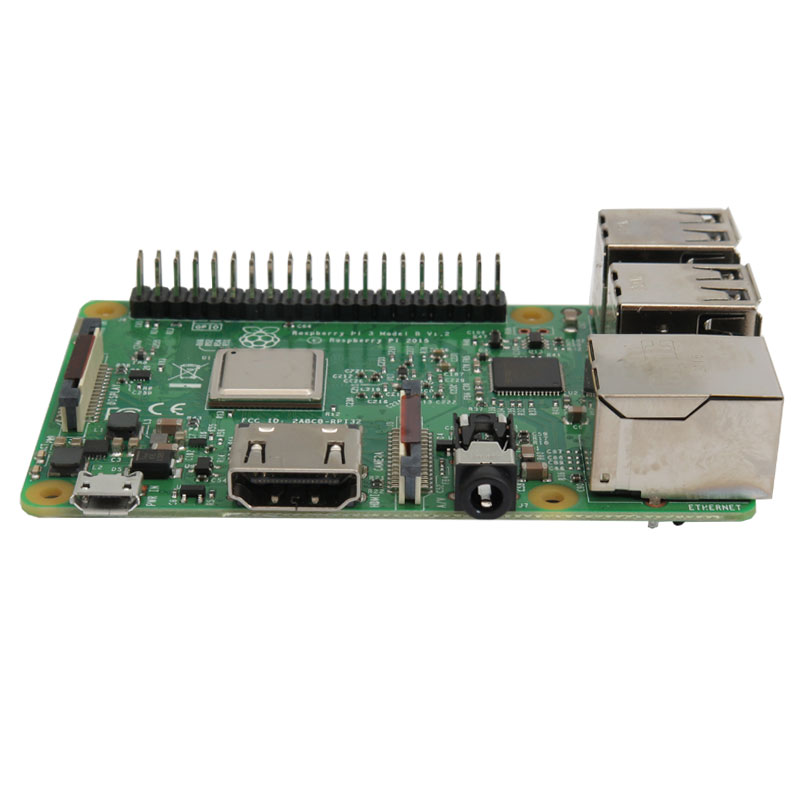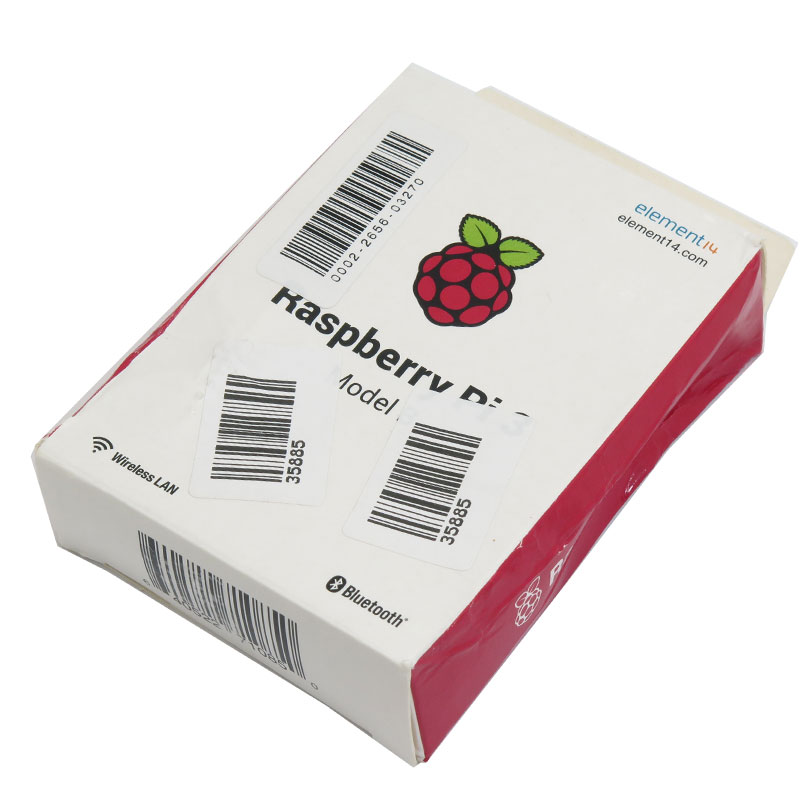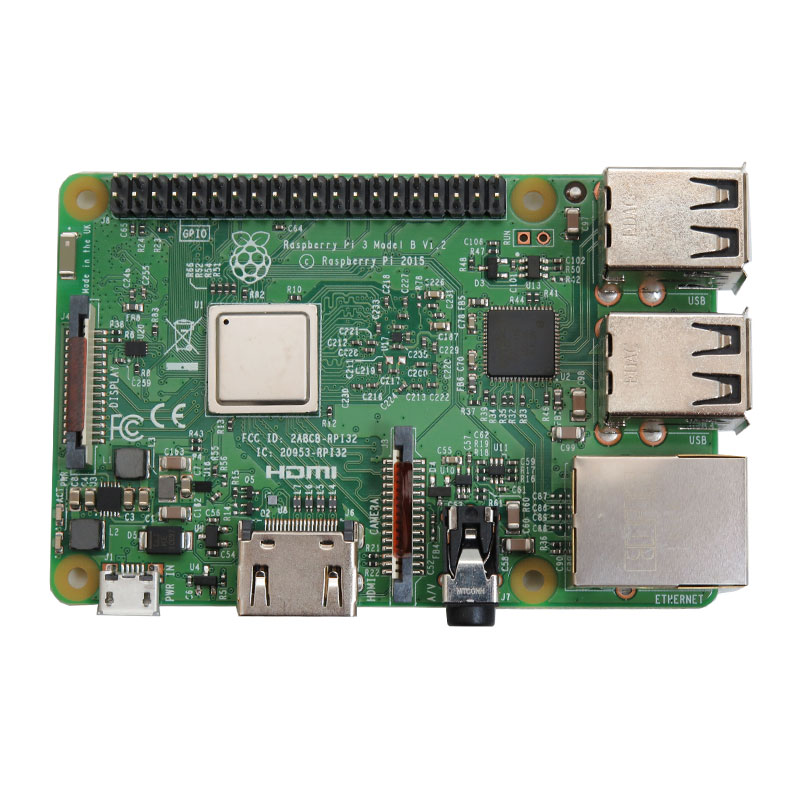4 از 5.0 با 128 رای
برد چهار هسته ای 64 بیتی رزبری پای 3 مدل B دارای 1GB RAM ، وایفای و بلوتوث داخلی
برد رزبری پای یک کامپیوتر تک بردی با ابعاد کوچک می باشد که دارای مدل های مختلف و قابلیت های متفاوتی می باشد. بردهای رزبری پای نسبت به لپتاب و کامپیوترهای معمولی سرعت پایینی دارند اما با این وجود می توان آن را یک کامپیوتر با سیستم عامل لینوکس به حساب آورد که قابلیت ارتقا دارد. این برد ها مناسب مواردی که نیازمند مصرف انرژی پایینی هستند, بسیار مناسب است. رزبری پای 3، یکی از کامل ترین بردها در خانواده خود می باشد. در مدل رزبری پای 2 از فرکانس Quad-core 900MHZ استفاده شده و در مدل رزبری پای 3 به Quad-core 1.2GHZ ارتقا یافته است.
ارتباط بیسیم، اینترنت اشیا و بلوتوث، پردازنده ARM cortex A53، حافظه RAM یک گیگابایتی، جک 3.5 میلی متری صوتی، درگاه های سریال برای اتصال نمایشگر و دوربین، قابلیت پخش ویدیو HD و پخش صوتی استریو و هم چنین عدم نیاز به آنتن خارجی از قابلیتهای پرکاربرد این برد می باشد. سیستم عامل این برد بر پایه لینوکس، رزبین(Raspbin) و نوبز(Noobs) می باشد. رزبری پای 3 همانند نسخه های قدیمی تر آن از تراشه SMSC LAN9514 استفاده می کند.
محل قرارگیری قطعات و کانکتورهای رزبری پای 3 تقریبا همانند نسخه قبلی خود می باشد. صرفا با جابجایی مکان LED به سمت دیگر محل SD Card، فضا برای آنتن Wifi مهیا شده است.
مشخصات:
پردازنده:
Broadcom BCM2387 chipset
(64 بیتی)1.2GHZ Quad-Core ARM Cortex-A53
(b/g/n Wireless LAN and Bluetooth 4.1 (Bluetooth Classic and LE
گرافیک:
Dual Core VideoCore IV® Multimedia Co-Processor. Provides Open GL ES 2.0, hardware-accelerated OpenVG, and 1080p30 H.264 high-profile decode
Capable of 1Gpixel/s, 1.5Gtexel/s or 24GFLOPs with texture filtering and DMA infrastructure
حافظه:
1GB LPDDR2
عملکرد سیستم:
قابلیت بوت از Micro SD card ، که با یک ورژن از سیستم لینوکس یا ویندوز IoT 10 راه اندازی میگردد.
ابعاد:
17 × 56 × 85 میلی متر
توان:
سوکت Micro USB 5V 2.5A
اتصالات:
شبکه محلی کابلی: 10/100 BaseT Ethernet socket
خروجی ویدیو:
(HDMI (rev 1.3 & 1.4
(Composite RCA (PAL and NTSC
خروجی صدا:
جک 3.5 میلی متری صوتی
HDMI
USB:
4 عدد USB 2.0
GPIO Connector:
40 پین 2.54 میلی متری( 100) expansion header معادل دو ردیف 2 * 20
Providing 27 GPIO pins as well as +3.3 V, +5 V and GND supply lines
اتصالات دوربین:
15 پین (MIPI Camera Serial Interface (CSI-2
اتصالات نمایش:
Display Serial Interface (DSI) 15 way flat flex cable connector with two data lanes and a clock lane
اسلات کارت حافظه:
Push/pull Micro SDIO
Description:
The Raspberry Pi 3 is equipped with a quad-core 64-bit Broadcom BCM2387 ARM Cortex-A53 SoC processor running at 1.2 GHz, making it about 50% more powerful than the Pi 2. This means the new Raspberry Pi 3 can be used for office applications and web browsing.
The GPU provides Open GL ES 2.0, hardware-accelerated Open VG, and 1080p30 H.264 high-profile decode and is capable of 1Gpixel/s, 1.5Gtexel/s or 24 GFLOPs of general-purpose
compute.
Although the Raspberry Pi 3 does not have H.265 decoding hardware, the CPU is more powerful than its predecessors, potentially fast enough to allow the decoding of H.265-encoded videos in software.
The great innovation in this third version is undoubtedly the addition of a WiFi chip and Bluetooth Low Energy. This not only saves space (you no longer need to connect WiFi and Bluetooth dongles) but also frees up more USB ports for connecting other devices.
The Raspberry Pi 3’s four built-in USB ports provide enough connectivity for a mouse, keyboard, or anything else that you feel the RPi needs, but if you want to add even more you can still use a USB hub. The Raspberry Pi 3 features the same 40-pin general-purpose input-output (GPIO) header as all the Pis going back to the Model B+ and Model A+.
By adding these two features, Raspberry Pi has made it clear that this new version is geared to the Internet of Things (IoT) and home automation. The Raspberry Pi 3 is also compatible with Windows 10 IoT Core, an operating system designed for creating and developing applications destined for home automation, robotics and connected objects. The Raspberry Pi Foundation provides Raspbian, a Debian-based Linux distribution for download, as well as third-party Ubuntu, Windows 10 IoT
Core, RISC OS, and specialized media centre distributions.
The Raspberry Pi 3 board is the same size as the Raspberry Pi 2 and has an almost identical connector and component configuration. There’s no need to connect an external antenna to the Raspberry Pi 3. Its radios are connected to this chip antenna soldered directly to the board, in order to keep the size of the device to a minimum.
“All that’s changed is the position of the LEDs, which have been moved to the other side of the SD card to make room for the WiFi antenna. All the connectors are in the same place and have the same functionalities.”
Features:
Processor: Broadcom BCM2387 chipset 1.2GHz Quad-Core ARM Cortex-A53 (64Bit)
802.11 b/g/n Wireless LAN and Bluetooth 4.1 (Bluetooth Classic and LE)
GPU: Dual Core VideoCore IV® Multimedia Co-Processor. Provides Open GL ES 2.0, hardware-accelerated OpenVG, and 1080p30 H.264 high-profile decode. Capable of 1Gpixel/s, 1.5Gtexel/s or 24GFLOPs with texture filtering and DMA infrastructure
Memory: 1GB LPDDR2
Operating System: Boots from Micro SD card, running a version of the Linux operating system or Windows 10 IoT
Dimensions: 85 x 56 x 17mm
Power: Micro USB socket 5V, 2.5A
Connectors:
Ethernet:10/100 BaseT Ethernet socket
Video Output: HDMI (Ver 1.3 & 1.4) Composite RCA (PAL and NTSC)
Audio Output: Audio Output 3.5mm jack
USB: 4 x USB 2.0 Connector
GPIO Connector: 40-pin 2.54 mm (100 mil) expansion header: 2x20 strip
Providing 27 GPIO pins as well as +3.3 V, +5 V and GND supply lines
Camera Connector: 15-pin MIPI Camera Serial Interface (CSI-2)
Display Connector: Display Serial Interface (DSI) 15 way flat flex cable connector with two data lanes and a clock lane
Memory Card Slot: Push/pull Micro SDIO


